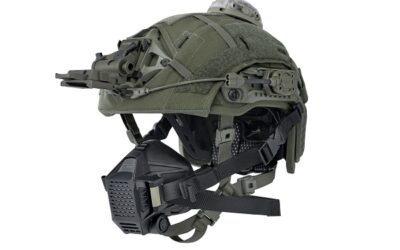CubeSats offer a potentially lower-cost alternative to airborne signals intelligence gathering platforms
Procuring an operating airborne Signals Intelligence (SIGINT) platforms is expensive: First, it is necessary to procure an airborne platform, often more than one. Those platforms then need to be equipped with the necessary SIGINT equipment, personnel have to be recruited and then trained to crew the aircraft; not to mention the maintenance, repair and overhaul costs throughout the aircraft’s life: The UK’s acquisition of three Boeing RC-135W AirsSeker COMINT-gathering aircraft from the United States cost the British taxpayer almost $1 billion for the acquisition alone. As such airborne SIGINT arguably remains a niche capability available to air forces whose governments have pockets deep enough to pay for such a capability.
Nevertheless, the acquisition of an overhead SIGINT capability could be ‘democratised’ via the acquisition of so-called ‘CubeSats’; small satellites typically weighing no more than 1.3kg (2.9lbs) argues David Stupples, professor of electronic and radio systems and director of EW research at City University, London: “We have to start thinking outside the box,” Prof. Stupples told delegates during the Association of Old Crows’ Electronic Warfare Asia conference being held in Singapore 29-30 January.
Traditionally, satellite SIGINT collection had been even more of a niche capability than its airborne equivalent due to the exorbitant costs of designing, testing and launching the requisite spacecraft. As an example, Prof. Stupples stated that such a satellite into the heavens can cost $250 million for the launch alone. He continued that France’s new CERES SIGINT satellite cost $406 million just for the satellite.
Moreover, airborne sorties have to be planned and executed and the intelligence they collect then has to be analysed, added Prof. Stupples. The danger of this approach, he added, means that electronic intelligence can be out of date once this intelligence is available to its ‘customers’. To make matters worse, radars are increasingly employing low probability of detection/interception waveforms which can make their detection by airborne platforms difficult. The problem is that to gain such SIGINT overhead assets need to dwell, which gives satellites a notable advantage over their winged brethren.
“CubeSats are the future,” said Prof. Stupples. Launch prices for these satellites can be as comparatively low as $100,000 thanks to the ability of such spacecraft to share rocket space with other payloads. Construction costs can be around $400,000. These spacecraft can be placed into a low earth orbit where they can dwell and ‘hoover up’ spectrum. Furthermore due to their small size, CubeSats can be “stealthy” and are hard to detect, while several spacecraft can be used to maximise their coverage and improve their emitter detection and geolocation capabilities.
Nine satellites, for example, could cover the entire Earth. Prof. Stupples argued that CubeSats will not necessarily replace conventional SIGINT satellites positioned in very high orbits. Instead, they could act as both an important augmentation to such assets, and offer potentially new SIGINT gathering means to those nations presently bereft of overhead platforms.
Dr Thomas Withington

























